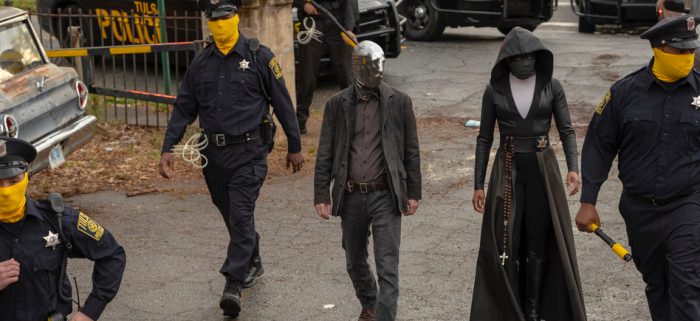
There are a lot of obvious differences between HBO’s Watchmen and its source material, the 1986 comic by Alan Moore and Dave Gibbons. There’s also a lot of coverage out there about these differences, and I agree with the coverage that says these differences work more often than not.
But even though the TV show and the graphic novel are clearly different, there are crucial similarities as well. Both, for example, use the superhero trope as a metaphor to explore how power is often wielded in harmful ways, even if those in control think they’re doing the right thing. Both also tackle themes around identity (can someone in a mask really know what they stand for?) and the danger of creeping authoritarianism (who watches the Watchmen?). And both are, in my opinion at least, really really good.
If these concepts intrigue you, and you haven’t read the graphic novel, you should definitely do so. And if you’ve already read Watchmen and are itching for more material in the same vein, give these other comic book series a try.
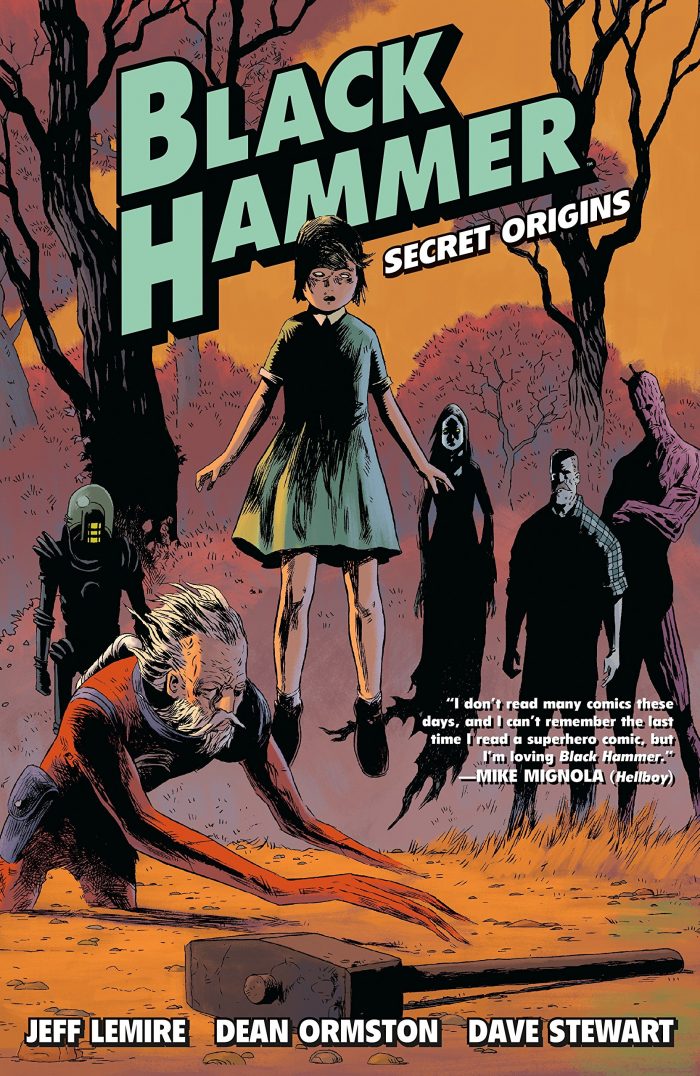
Black Hammer
Black Hammer, an ongoing Dark Horse comic created by writer Jeff Lemire and artist Dean Ormston, follows a group of six disparate superheroes who end up trapped in a small town called Rockwood. The series starts ten years after the heroes became stuck there, and follows their travails on Black Hammer Farm, the area in town where they all settled down while other seemingly normal Rockwood residents come and go as they please. Like Watchmen, the comic is largely character-driven, with the six’s superpowers being more metaphorical than something that drives the plot. Also like Watchmen, the series makes a meta-commentary on the history of superhero comics, with each of the characters representing a certain comic book era.
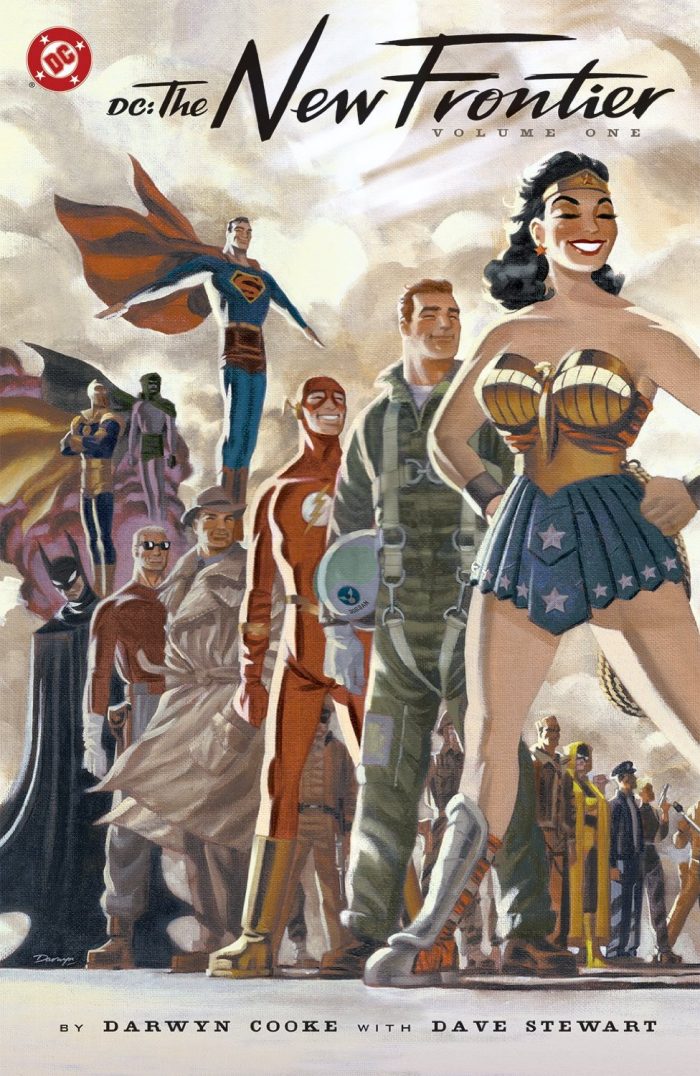
DC: The New Frontier
DC: The New Frontier, a 2004 Eisner Award-winning limited comic book series written and drawn by Darwyn Cooke, takes place from 1945-1960. In this universe, the world is struggling with the ramifications of the end of World War II and the burgeoning of the Cold War. The reputations of superheroes are also on the decline, and the U.S. Government is frankly tired of dealing with masked crusaders. When a malevolent alien force attacks Earth, however, the Government reluctantly joins forces with the Golden Age heroes – Superman, Batman and Wonder Woman — as well as newer superheroes like The Flash and Green Lantern. The series, like the original Watchmen, also pulls in the politics of the time, including a cameo from Richard Nixon and an excerpt from one of President Kennedy’s speeches, which also gives the comic its title.
As a limited series, the comic runs relatively short. Fans of the work, however, can get more of it by watching its animated film adaptation, Justice League: The New Frontier, which you can currently stream on DC Universe.
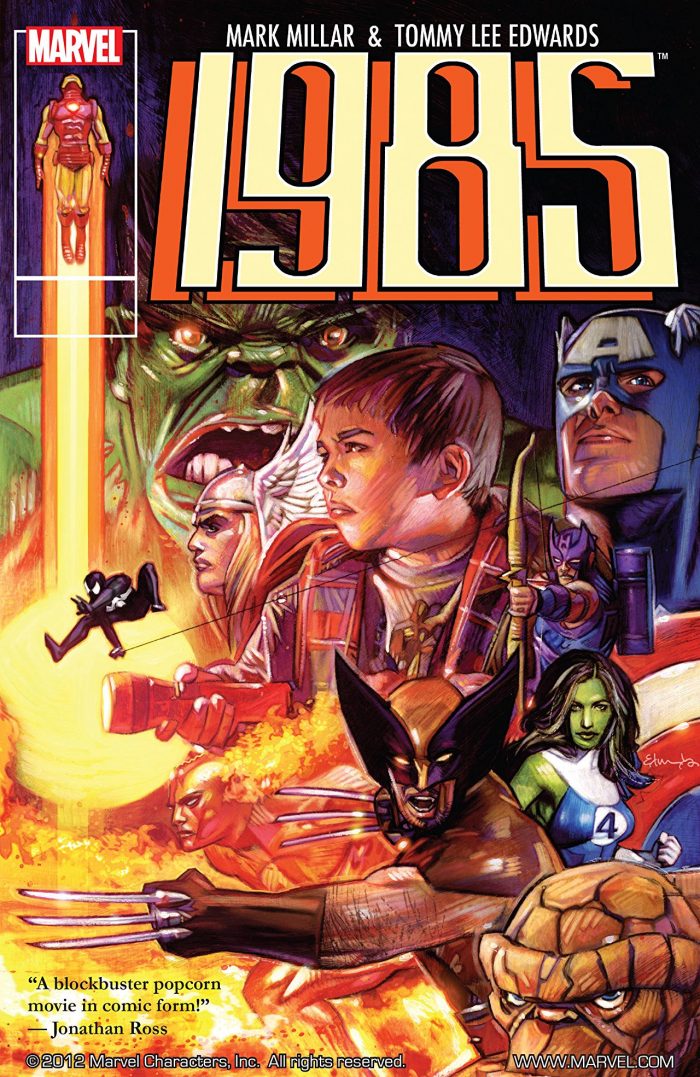
Marvel 1985
Marvel 1985, a 2008 six-issue comic book series written by Mark Millar and drawn by Tommy Lee Edwards, rests on the premise that characters from the Marvel Universe show up in the real world. The comic has a 1980s-movie vibe to it, and if Watchmen is a deconstruction of superheroes, then 1985 is a deconstruction of superhero comics as a medium. The story follows the exploits of a young boy named Toby Goodman, who—after reading some Marvel comics of his own (very meta)—catches a glimpse Red Skull in his suburban town and then literally runs into The Hulk. Hijinks ensue, with Toby ultimately traveling to the Marvel Universe where more adventures ensue. The last issue of the comic also has a very meta twist that will make you want to re-read the whole thing again.
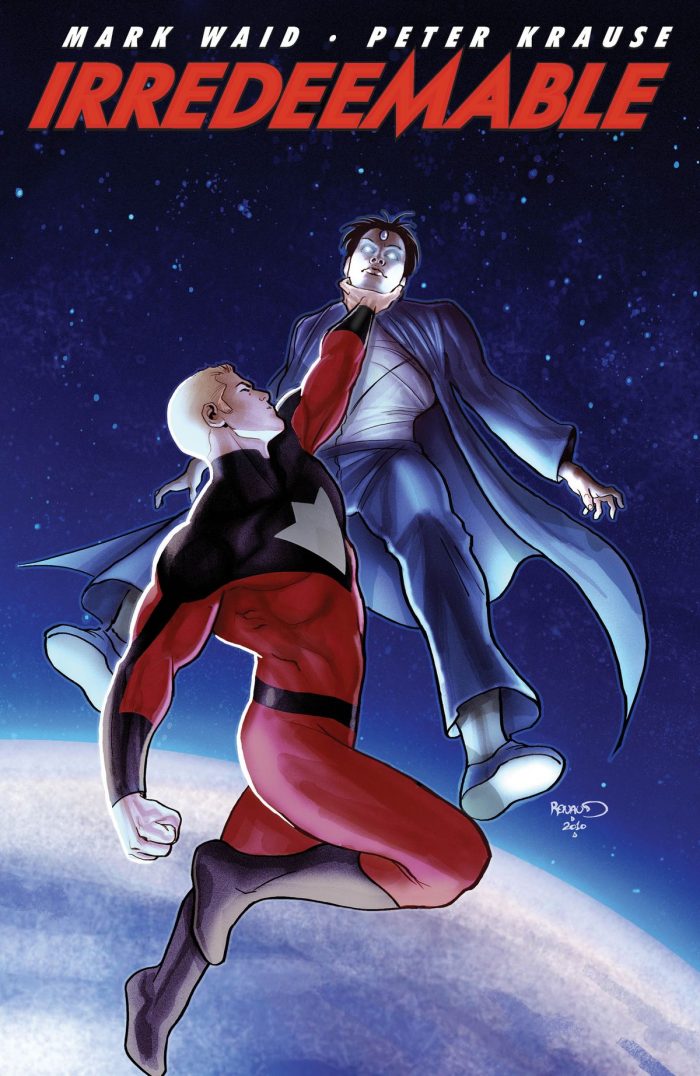
Irredeemable
Irredeemable, a Boom! Studios comic written by Mark Waid and drawn by Peter Krause and Diego Barreto, explores what if someone with immense superpowers didn’t have the emotional capacity to handle them responsibly. The 37-issue series ran from 2009 to 2012, and follows Plutonian—the world’s greatest superhero who inexplicably goes on a rampage and murders millions. The remaining superheroes, who aren’t exactly the epitome of justice and doing the right thing, work to stop Plutonian. In doing so, they unravel Plutonian’s origin story as well as how he morphed into the world’s greatest supervillain. Plutonian’s journey (similar, in fact, to Dr. Manhattan’s journey in Watchmen) also explores how having superpowers sets you apart from humanity, which can subsequently make one view humans as creatures not worth saving.
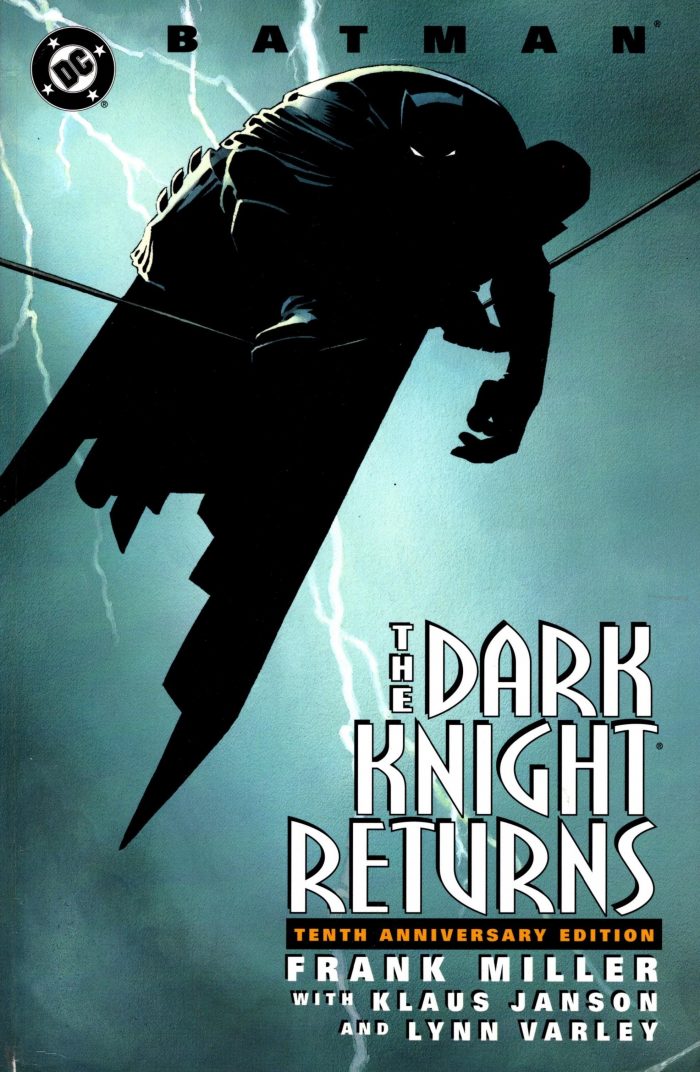
The Dark Knight Returns
The Dark Knight Returns, a 1986 four-issue comic written by Frank Miller and drawn by Miller and Klaus Janson, is a classic Batman comic that explores similar themes found in Watchmen—including the question of whether we can really trust anyone in a mask, even if they are “doing good.”
In this series, a 55-year-old Bruce Wayne has officially hung up the cape until rampant crime in Gotham causes him to become the Batman once again. As Batman, he fights a Gotham gang called The Mutants, who are the cause for much of the city’s violence. When he defeats their leader, however, the remaining gang members regroup as the Sons of Batman and turn their violent ways on criminals instead. The widespread vigilantism catches the attention of President Ronald Reagan, who then sends Superman to deal with Batman (right after he deals with the Soviets, of course). The series is a classic for a reason, and is a must-read for any Batman fan. Even if you’re not into the Dark Knight, however, it’s still worth a read, especially if you’re interested in exploring how security is often an illusion, and whether an anti-hero can truly mete out justice in an unjust world.
The post If You’re Enjoying HBO’s ‘Watchmen’, You’ll Love These Five Comic Books appeared first on /Film.
from /Film https://ift.tt/2NtGSci
via IFTTT
Comments
Post a Comment